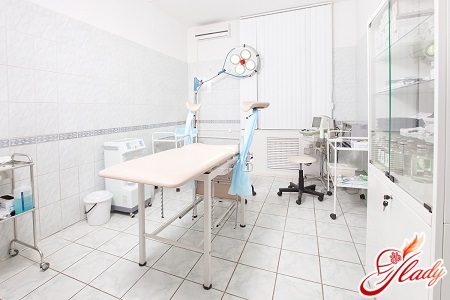
Unwanted pregnancy is very commonleads women to the need to have an abortion. Surgical abortion is considered a classic and the most common way to terminate an unwanted pregnancy. This type of abortion is performed after the embryo has already reached several grams in weight. As a rule, this happens after the seventh week of pregnancy. Surgical abortion is a procedure for scraping the uterine cavity using a curette - a special medical instrument in the form of a small spoon. This procedure for removing the fetus from the uterus is called curettage. Otherwise, these manipulations are called curettage. In medicine, curettage is considered a fairly common procedure. It is performed not only for the purpose of removing the fetus, but also in the treatment of many gynecological diseases. Very often, curettage helps stop uterine bleeding. The scraped tissues are sent for further examination, which allows identifying various diseases.

What is the procedure for surgical abortion?
It is worth saying that surgical abortion is more commonAll other types of embryo removal have complications. Unlike medical and vacuum abortion, surgical abortion is always performed in a hospital. The embryo removal procedure is performed under general anesthesia. The entire process takes from 15 to 30 minutes. An anesthesiologist must be present in the operating room during the operation. The operation begins with the woman being placed on a surgical chair, after which she is put under anesthesia. Using a special probe, doctors expand the uterus. Then comes the main part of the abortion. The doctor inserts a curette into the uterine cavity, with which he performs the procedure of scraping out the upper layer of cells (uterine epithelium). During this process, the embryo itself is destroyed. There are often cases when scraping out the uterine cavity is combined with the use of a vacuum, with the help of which the destroyed parts of the removed embryo are sucked out. At this point, the procedure of surgical embryo removal is considered complete. The woman is advised to stay in bed under the supervision of the attending physician. After all, the woman is prescribed special medications to contract the uterus. A follow-up ultrasound scan is required in a few days.
Removal of the embryo at different stages of pregnancy
As is known, fetal removal is also carried outearly and quite late in pregnancy. If the pregnancy period is from 6 to 14 weeks, the embryo is removed using a special vacuum device. Then the uterine cavity is curettaged. Under the action of the vacuum device, the embryo's body is destroyed and it easily passes through a special suction tube. Curettage is used to clean the uterus from embryonic membranes. Embryo removal at these stages is considered early. At 13-22 weeks of pregnancy, the fetus is already considered quite large. Here, the procedure requires greater expansion of the uterus than an abortion performed at early stages of pregnancy. To remove the fetus from the uterus, it is first destroyed surgically, then large parts of the embryo's body are pulled out using forceps. Small parts are removed using a vacuum device. After the fetus is removed, the uterine epithelium is also curettaged.
What are the contraindications for surgical removal of the fetus?
At first glance it seems that the proceduresurgical removal of the fetus does not pose any threat to the body. But in fact, statistics say that about 30% of deaths in obstetrics occur precisely during these manipulations. Not every woman can undergo such manipulations as abortion. There are a number of contraindications for the procedure. These include existing venereal or gynecological diseases. Acute inflammatory processes or exacerbation of chronic processes in the body are a good reason to refuse an abortion. Contraindications also include diseases of the bladder, appendicitis, diseases of the colon and some others. Before having an abortion, make sure that you do not have any contraindications, otherwise the consequences can be very dire.
What complications can there be after surgical abortion?
It is believed that surgical removal of the embryocauses great harm to the female body. It promotes the development of stress, as well as various infections. Thus, one of the most common complications of surgical removal of the embryo is infection. If the abortion procedure was performed in non-sterile conditions, endometritis (inflammation of the uterus) may develop. If this infection is not treated, it can lead to the most tragic consequences, including blood poisoning, which ultimately leads to death. Very often, removal of the fetus causes bleeding. Such bleeding can be both weak and strong. Severe bleeding can lead to the fact that the uterus will have to be removed. Very often, such consequences occur as a result of the procedure being performed by unqualified specialists. The more often the abortion was performed, the greater the likelihood of infertility. After several abortions (and for some, even after one), the surface of the uterus becomes like one large scar. This leads to the fact that the embryo cannot attach to the wall of the uterus, as a result of which it dies. If the doctor used a rough probe to expand the uterus during the embryo removal procedure, this may damage it. Such damage may lead to miscarriages in the future, since the cervix is no longer able to perform its functions as it did before. In medicine, there are known cases of incomplete removal of the fetus. This means that the pregnancy is not terminated, and the embryo continues to develop. Children born as a result of incomplete abortions usually have many different developmental defects. It happens that due to rough actions of an unqualified doctor, a hole is formed in the wall of the uterus, which is called perforation. One of the consequences of an unsuccessful removal of the fetus may be the formation of antibodies to the blood cells of the fetus, if the mother's blood has a negative Rh factor. In medicine, this phenomenon is called Rh sensitization.
We draw some conclusions
So, as it has already become clear, the proceduresurgical removal of the embryo can cause significant harm to the female body. Think carefully before deciding to have an abortion. The abortion procedure can lead to further infertility. Try to avoid unwanted pregnancy. Modern methods of contraception can protect against pregnancy by 99% if used correctly.









